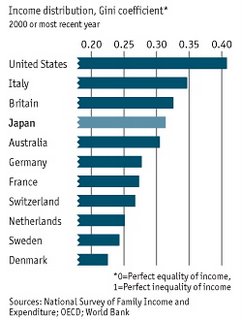The
NY Times highlights the growing trans-atlantic divide over Genetically Modified Crops, with the US and Canada in favor, and parts of the E.U. adamantly opposed. For a majority of consumers, these crops probably pose no major health threats. For some, these crops are potentially harmful, and there is a simple remedy to that problem: labeling. Unfortunately, labeling raises the possibility of liability, as data gets collected over time. Liability affects future profit$.
The opposition in Europe is primarily cultural. Europeans have a special relationship with their food, they like locally grown items, and really have a romantic view of the countryside and the small farms. Contrast that with the majority of the U.S. population: the
industrial food chain is how most Americans shop.
Another reason E.U. countries oppose GMO crops is the fact that these crop strains will eventually take over their prized local varieties. It doesn't help that the primary beneficiaries are U.S. Corporations. U.S. and Canadian court decisions have established that corporations have the right to sue farmers for unknowingly planting crops that
descend from GMO plants. Unfortunately, one you let GMO crops loose, it is virutally impossible to shield against cross-pollination. The end result is that farmers cannot save their seeds (they may violate GMO patents) and are forced to buy seeds from, you got it, the same corporations.
American diplomats should back off, and stop promoting the interests of large U.S. companies. Let the Europeans enjoy their locally grown food, and let Americans enjoy the GMO crops and the industrial food chain. That won't happen of course. The Corporations need to grow their profits to satisfy their shareholders, and Americans can only eat so much. They are already increasingly consuming more
calorie$! Demand for food is quite inelastic, and really capped by the growth in population. Unless of course you can open up a huge market like the E.U. There are three ways of increasing the profits of the large American food corporations: convince Americans to eat more, patent GMO's, and expand overseas.
Yet another reason why we need companies who focus on the
Triple Bottom Line.
For more on this subject, check out this
excellent documentary.






